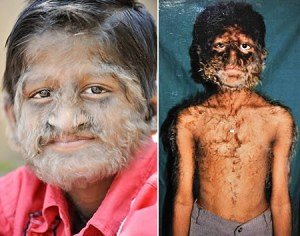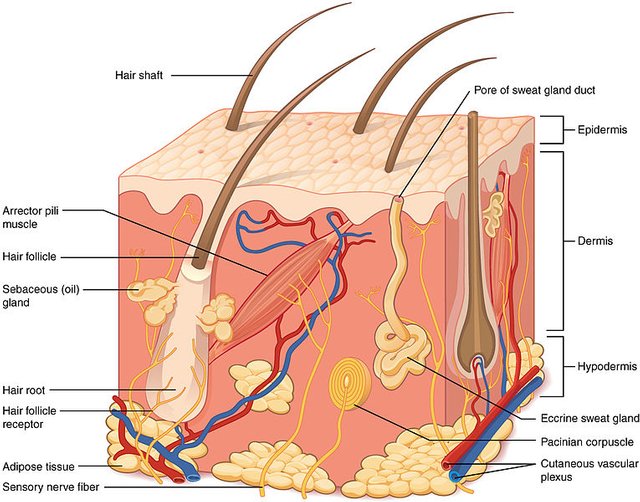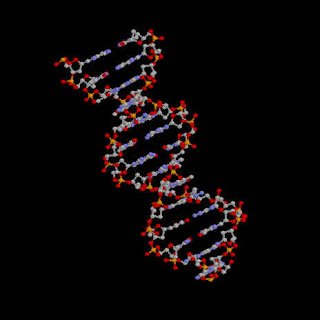HYPERTRICHOSIS: THE HAIR DISORDER THAT CONFIRMS THE 'NEVER SAY NEVER' PHENOMENON IN SCIENCE
Hello steemians. Happy Easter celebration to you all.
For a while now I've been battling with my health and other life challenges that's why I couldn't really come around here. The truth is, I missed this space so very much. Well, recently a friend of mine heard that I was ill and so decided to visit me at home. In actuality, since I rarely wear anything that exposes my body, it was her first time of ever seeing me with short. Her facial expression somehow got me cracking up so loud. She was indeed shocked how hairy I was. I kind of knew what she'd probably say so with a smirk I immediately pointed out that I most times wished I had more. Funny enough she didn't even allow me finish the statement when she also responded with "I hope you know what you just wished for. It's called Hypertrichosis".
 (License: Public Domain]:
Flickr
(License: Public Domain]:
Flickr Of course the way she pronounced the word with so much ease made me realize that she had a well of knowledge I could possibly draw from. As a matter of fact I wasn't disappointed. So today, the main aim of this article is to reach some level of enlightenment on a rare disorder that transforms human into a beast. I'm optimistic that you'll definitely learn a thing or two from this article. Saddle your seat belt as we take this intriguing ride together.
Let us begin with the basis...
 (License: Public Domain]:
Wikipedia Commons
(License: Public Domain]:
Wikipedia Commons As a matter of fact, we can't just start talking about the hair or any disorder that pertains to it without first discussing on the skin. As we all know, the skin is believed to be the outermost covering of vertebrates. Now, from our elementary knowledge of biology, you'll agree with me that the skin forms a continuous layer over the entire body thereby making it the largest organ known to man. Furthermore, research studies have proven that in mammals, the skin usually bears a dense growth of hairs; yet, this isn't the case for humans. At this point I'd love to say that we'll discuss in details about the normal sparse growth of hairs in humans as we move ahead. But before that, in order to bring this down to a layman's level, there is need to consider the structure of the skin.
Actually, since our emphasis is on mammals; it is worthy of note that living organisms grouped under this category have two main skin layers. The first layer happens to be the epidermis while the last layer is referred to as the dermis. In addition to this, it might interest you to know that each of these layers have sub-layers and other vital components that makes them distinct and at the same time unique. For instance, the epidermis comprises of three (3) sub-layers called the innermost malpighian layer, middle granular layer, and outermost cornified layer. However, connective tissues containing blood capillaries, hair follicles, sweat and sebaceous glands, sensory nerve endings, and a single subcutaneous fatty-layer are all compositions of the dermis.
With that being said, don't forget I pinpointed that when talking about the arrangement of the two main skin layers; the epidermis is always the first (from the outside). Now, the truth is that just a sub-layer of the epidermis is the surface of the skin which we can see and touch, whereas the rest are embedded inside. This surface skin layer specifically known as the cornified layer is made up of scale-like dead cells impregnated with keratin. As discovered from research studies; the reason behind the toughness, flexibility, and waterproof nature of the cornified layer are all basic functions of the keratin contained in these dead cells. In order to keep the body in a perfect condition, these dead cells are constantly being rubbed off and replaced by cells from the next sub-layer below called the middle granular layer.
Apparently, the role performed by the granular layer of the epidermis is quite simple but vital. As a matter of fact, the dead cells present in the cornified layer all emanated from the malpighian layer as actively dividing cuboidal cells. But as time went by, they were gradually pushed up into the granular layer. The resultant effect of the cells being pushed up causes them to become greatly flattened and in the process accumulate keratin (which is a fibrous protein). So in essence, we can therefore refer to the granular layer as an intermediary between the innermost and outermost layers of the epidermis. Well, I'm quite sure that out of curiosity someone might want to know why I focused so much on the movement of these cells from one sub-layer of the epidermis to another. You'll get to find out as we continue to move ahead.
Like I said earlier on, the cells emanating from the malpighian layer are believed to be living cells. Now, have you wondered why they died immediately they got to the cornified layer or surface of the skin? The answer is this; the malpighian layer contain melanin, a pigment known for giving the skin its colour. As the living cells are being pushed up, they're accompanied by melanin, or let’s say they also contain melanin. Indeed, what melanin does is that it absorbs the ultraviolet rays of the sun and this singular act has damaging effects on living cells. That's why the cells on the cornified layer are all dead cells and are continuously being replaced. Honestly, the importance of this knowledge when talking about the concept of skin coloration can never be overemphasized.
On the other hand, for the dermis, aside from the blood capillaries, sweat glands and sensory nerve endings; it derives the rest of its compositions (such as hair follicles and sebaceous glands) from many infolding of the malpighian layer. If we want to discuss about the functions of each of these components that make up the dermis, we'll realize that almost everything is interconnected with high level of communication. But to avoid this write-up from being unnecessarily extensive with boring details we'll only highlight few points. For example, it might interest you to know that the main function of the blood capillaries is just for transportation of substances in and out of the different sub-layers and components that make up the skin. These substances include nutrients, oxygen and waste. By so doing, the blood capillaries indirectly help in regulating body temperature which is a primary function of the sweat glands.
Furthermore, at some point in time you've heard that the skin is one out of the five (5) sense organs present in the body. Actually, why the skin is referred to as a sense organ is due to the presence of sensory nerve cells or receptors in the dermis. These sensory nerve endings are capable of receiving stimuli from the external surroundings and in-turn send these signals to appropriate parts of the body for interpretation and action. In fact, this makes us aware of changes in our surroundings hence aiding in well-being and survival. The various types of receptors scattered throughout the skin include:
• Touch receptors (Meissner's corpuscle)
• Pressure receptors (Pacinian corpuscle)
• Pain receptors (Free nerve endings)
• Thermoreceptors (for detecting heat and cold)
What you should know about the hair on the human body
 (License: Public Domain]:
Flickr
(License: Public Domain]:
Flickr If you're indeed following me well, you'll realize that I didn't say anything about the hair follicle despite the fact that it's one of those major components found in the dermis. As a matter of fact I did that on purpose. Unlike the other components that I only highlighted on, we'll be considering the hair on a wider perspective. But for now you should know that the word 'hair' has something to do with two distinct structures. The first structure is the part beneath the skin (hair follicle), while the second structure is the hard filamentous part that extends above the skin surface (shaft). Also, know that hair growth begins inside the hair follicle and at that location the hair is regarded as a 'living' component. At the same time, the visible hair shaft is believed to exhibit no biochemical activity and is considered 'dead'.
Since we now know where the hair originates from, it's therefore pertinent to state that the hairs on the body are basically of two (2) different types namely: vellus hair and androgenic hair. All the same, there's something important you need to know. When talking about the types of hair on the body, personally I'd love to say that vellus, terminal and androgenic hairs fall under the secondary classification. During the early stages of life, research studies assert that the fetus or unborn baby starts producing soft thin hairs (lanugo) in the second trimester (6th month of pregnancy). Shockingly, the main purpose of the lanugo is to keep the baby warm inside the womb. Although this might sound weird and unbelievable since most babies have hairless bodies at birth; nevertheless, this still doesn't change the fact that there are few babies born with a thin layer of hair covering their little bodies. A good example is babies that are born before they could fully develop (preemies). Well, the reason why this situation isn't common is because while in the uterus or womb, many babies lose their lanugo once they get to the third trimester (specifically 8th - 9th months). As a result of this, the lanugo is being shedded into the amniotic fluid. Indeed, whether it's a preemie or mature infant, it's worthy of note that the lanugo is always replaced few weeks after birth by another set of finer, yet, harder to see hair known as the vellus hair.
Aside from the vellus hair, the next hair type we made mentioned of was the androgenic hair. Just as the name implies, this hair type is closely linked with the level of male sex hormone called androgen. The androgenic hair is believed to develop on the human body during and after puberty. So in other words we can simply say that the androgenic hair virtually replace the vellus hair. Now, someone might begin wondering why females also have this darker and thicker body hair when in actual sense the growth of this hair is exclusively dependent on androgen. I'd love to answer this in one word. Despite the fact that androgen is regarded as a male sex hormone; it's also present in females but in a little amount. As a matter of fact, the females you see having facial hairs (beards), hairs on the chest, etc., might either be suffering from androgen hormonal imbalance (caused by increased level of androgen) or a rare genetic disorder.
The rare genetic disorder that transforms human into a beast
.jpeg) Petrus Gonsalvus; nicknamed the 'man of the woods'. (License: Public Domain]:
Wikipedia Commons
Petrus Gonsalvus; nicknamed the 'man of the woods'. (License: Public Domain]:
Wikipedia Commons Over the years the most common interest in hair is focused on hair growth, hair types, and hair care. Unfortunately, you'll agree with me that so many people are ignorant of the fact that there are other concepts pertaining to hair that can affect humans physiologically and psychologically. In this article I'll introduce you to a hair disorder that's very distinct and triggers hair growth in places where hairs shouldn't be seen in a normal condition. This disorder is known as hypertrichosis.
But before we talk on hypertrichosis; have you ever wondered why hairs don't grow on certain regions of the body like the forehead, palm, foot, etc. According to findings done by Dr. Sarah E. Millar in her article on Why some parts of the body have hair and others don't, she stated that the answer is embedded in the fact that there is presence of a naturally-occurring inhibitor called Dickkopf 2 (DKK2) in these hairless regions. Now, the action of this inhibitor is exerted on WNT signaling pathway responsible for controlling hair growth. That's why the hair follicles are entirely turned off in these regions.
Based on intensive research studies, hypertrichosis is said to be a clinical condition characterized by excessive hair growth without androgenic stimulation. In a word, what I'm trying to say is that this disorder has a non-androgen-related pattern of excessive hair growth and sometimes hairs are visible in most of the regions where it shouldn't be seen. All the same, cases of this disorder either involve only lanugo or vellus hair type. Actually, the direct involvement of these types of hair (lanugo and vellus) with hypertrichosis is to a large extent considered as a determining factor when the issue of classification of hypertrichosis is discussed.
From the above statement, the point is, this disorder is broadly classified mainly into two groups: Primary and secondary hypertrichosis. Howbeit, for easier understanding, both groups are further splitted into various subgroups. But before we mention some of these subgroups I'd love to pinpoint that in primary hypertrichosis there is no underlying cause of the excessive hair growth whereas this is not so in secondary hypertrichosis. In addition to what I've said, it is worthy of note that primary hypertrichosis can either be categorized under two different subgroups which are congenital or acquired. Even without explaining you'll understand that hypertrichosis that are congenital are those that occur right from birth. In a simple word, individuals are born with it. Now, acquired hypertrichosis happened to be the exact reverse of congenital.
For the secondary hypertrichosis, its concept has nothing to do with the onset of the disorder like it's seen in primary hypertrichosis. That notwithstanding; this particular classification pays attention to the location on the body in which the excessive hair is being distributed. So in essence we can divide secondary hypertrichosis into the following subgroups: generalized or localized. Just like their literal meaning, the location of the excessive hair in generalized hypertrichosis is not specific or limited to a particular part of the body quite unlike the localized hypertrichosis. Now, one of the most intriguing facts about hypertrichosis is that each of the subgroups present in the main groups combine inversely with each other and also with either of the two types of hair (lanugo or vellus) in a 1:1:1 proportion. In order to bring this down to the lowest level, this is what I mean. For example, congenital generalized lanuginosa hypertrichosis. This is just one out of the many types of hypertrichosis. In this type, an individual is born with and as well grows with lanugo hairs distributed all over their body. You can read more about it HERE. I know it sounds unreal, but it's the truth. In science anything is possible. Never say never!
Causes of hypertrichosis and possibly remedies
 (License: Public Domain]:
Pixabay
(License: Public Domain]:
Pixabay Personally I feel this write-up won't be complete if we fail to examine the causes of this disorder. Like I said earlier on, since hypertrichosis is very distinct, there are also many theories that suggest how an individual can be affected. I'll try as much as possible to go straight to the point. For hypertrichosis that are congenital, research has it that it's caused by genetic mutation. The resultant effect of this circumstance is due to the hyperactive functioning of the genes that stimulate hair growth. Unfortunately, congenital hypertrichosis can be passed from parents to offspring. Well, the good thing is that congenital hypertrichosis is extremely rare when compared with the acquired forms.
Also, like the name implies, acquired hypertrichosis develops later in a person's life. It has a range of possible causes which includes: malnutrition; cancer and cell mutation; autoimmune and infectious diseases; use of certain drugs and medications, body creams, immunosuppressants, and androgen steroids, etc.
Finally, when talking about the possible remedies available for victims of hypertrichosis, it might interest you to know that there is no known cure for congenital hypertrichosis. Also, it's quite sad that the treatment methods for other types of hypertrichosis most times can't completely eradicate the disorder and sometimes in the process individuals experience adverse effects such as scarring, dermatitis, or hypersensitivity. Few examples of these treatment methods include: depilation methods (trimming and shaving), epilation methods (plucking, electrology, and waxing), and laser hair removal method.
Despite the treatment methods used, the greatest treatment approach is the one channeled to the mind. Even without explaining, it's so obvious that victims of this disorder go through so many traumatizing moments on a daily basis especially in our generation where majority of people see cyberbullying as a normal way of life. Well, if we could all show a little bit of love to anyone we come across; I'm sure the world definitely will be worth living for us all. Thanks for doing this with me. Till next time!
To read more about this topic, check out these REFERENCES
Hair from wikipedia.org
Hypertrichosis from wikipedia.org
Congenital Generalized Hypertrichosis, Gingival Hyperplasia, a Coarse Facies with Constriction Bands: A Rare Association from International Journal of Trichology
Causes and treatment of hypertrichosis from medicalnewstoday.com
Ramalingam, S. (2011). Modern Biology, 6th Edition. Nigeria: Africana First Publishers Plc, pp. 390-393
Images are from flickr, pixabay and wikicommons, licensed under creative commons and eligible for commercial use.
Interesting and well-detailed review on hypertrichosis. I must admit this is the first time of coming across that term.
I do not know why you referred to second trimester as the 6th month of pregnancy and the third trimester as 8-9 month of pregnancy. The second trimester is actually 3-6months of pregnancy while the 3rd trimester is 6-9th month. That being said....
I have seen females using different forms of hair growth stimulators (as claimed by the manufacturers) and beard growth stimulators by the male folks. Do you think these stimulators actually works knowing that hairs are dead cells? What mechanism behind this if they indeed work as claimed?
Secondly, I have seen a lot of females having beards; is this a genetic condition or a kind of environmentally acquired trait?
Lastly, are you aware that you can post your steemstem related posts from steemstem.io interface and get some extra votes just for using the dapp?
This post has been voted on by the SteemSTEM curation team and voting trail. It is elligible for support from @curie.
If you appreciate the work we are doing, then consider supporting our witness stem.witness. Additional witness support to the curie witness would be appreciated as well.
For additional information please join us on the SteemSTEM discord and to get to know the rest of the community!
Please consider setting @steemstem as a beneficiary to your post to get a stronger support.
Please consider using the steemstem.io app to get a stronger support.
Thank you